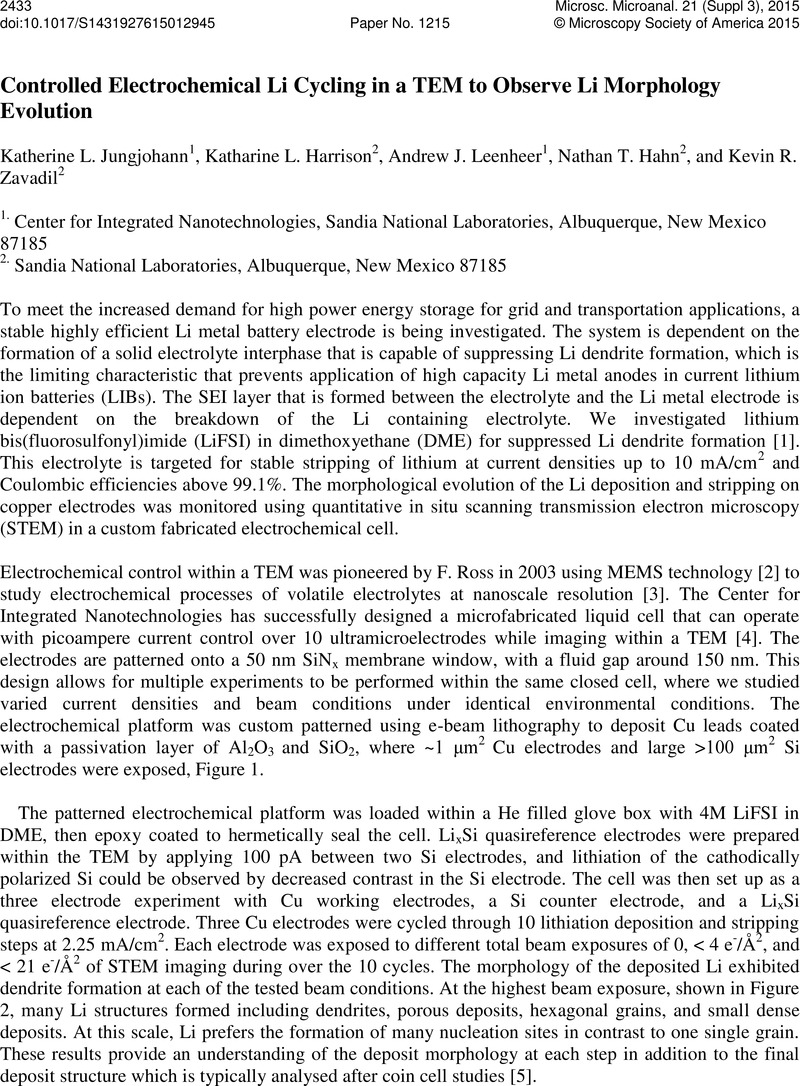No CrossRef data available.
Article contents
Controlled Electrochemical Li Cycling in a TEM to Observe Li Morphology Evolution
Published online by Cambridge University Press: 23 September 2015
Abstract
An abstract is not available for this content so a preview has been provided. As you have access to this content, a full PDF is available via the ‘Save PDF’ action button.

- Type
- Abstract
- Information
- Microscopy and Microanalysis , Volume 21 , Supplement S3: Proceedings of Microscopy & Microanalysis 2015 , August 2015 , pp. 2433 - 2434
- Copyright
- Copyright © Microscopy Society of America 2015
References
References:
[4]
Leenheer, A. J., et al, J. Microelectromech. S
99 (2015) 10.1109. /JMEMS.2014.2380771.Google Scholar
[5] This work was performed at the Center for Integrated Nanotechnologies (CINT), a U.S. DOE Office of Basic Energy Sciences (BES) user facility. Sandia National Laboratories is a multiprogram laboratory managed and operated by Sandia Corporation, a wholly-owned subsidiary of Lockheed Martin Corporation, for the U.S. DOE's National Nuclear Security Administration under contract DE-AC0494AL85000. Portions of this work were funded by the Nanostructures for Electrical Energy Storage, an Energy Frontier Research Center funded by the U.S. DOE, Office of Science. Other portions were funded by the Joint Center for Energy Storage Research, an Energy Innovation Hub funded by the U.S. DOE, Office of Science..Google Scholar




